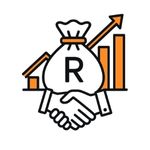
June marks the halfway point of the year, making it a practical time for South Africans to reassess finances and plan ahead. Whether you need to pay school fees, fix a vehicle for winter, or settle existing debts, borrowing can be a useful option when managed well. Many lenders also offer mid-year deals, making access to credit more affordable. Borrowing in June 2025 can help cover essential costs if approached with a clear repayment plan.
Key Takeaways
- Mid-year borrowing can be practical: June is a useful time for South Africans to borrow, especially to settle debts, cover school costs, or prepare for winter expenses, as lenders may offer competitive deals during this period.
- Current interest rate conditions are stable: With the repo rate holding at 7.5%, borrowing conditions remain steady, and there’s a possibility of further rate cuts later in 2025, which may benefit new borrowers.
- Responsible borrowing is key: Before applying for a loan, borrowers should assess affordability, compare offers, and avoid variable rates to ensure repayments stay manageable and aligned with their budget.
Interest Rate Trends Heading Into June 2025
As of mid-May 2025, the South African Reserve Bank (SARB) has maintained the repo rate at 7.5%, following a series of cautious reductions since late 2024. This stability reflects a measured approach to monetary policy amidst global uncertainties and domestic economic considerations.
Key Factors Influencing Current Rates
- Inflation Control: Consumer inflation has remained within the SARB’s target range of 3% to 6%, with recent figures showing a decline to 3.8% in September 2024.
- Economic Growth: The country’s economic growth forecast for 2025 has been adjusted to 1.5%, influenced by global trade tensions and domestic production challenges.
- Global Economic Climate: International factors, including trade policies and geopolitical developments, continue to impact South Africa’s economic outlook, prompting the SARB to adopt a cautious stance.
Implications for Borrowers
Economists expect that interest rates may drop further in the second half of 2025, depending on inflation and economic performance. With the repo rate currently at 7.5%, the borrowing environment remains relatively stable. This may create short-term opportunities for South Africans to access credit at better rates, especially for those looking to manage seasonal costs or consolidate debt.
Before borrowing, it’s essential to assess whether repayments fit within your current budget. Consider all loan terms carefully, including interest rates, fees, and repayment periods. Borrowing should support your overall financial plan whether for urgent needs or long-term goals rather than adding strain to your finances.
While June often offers attractive opportunities for borrowers, some may find even more advantages in the following month. Why July 2025 Is the Perfect Time to Borrow explains why mid-year lending can be especially strategic.
About Arcadia Finance
Looking for a stress-free loan? Arcadia Finance connects you to 19 reliable, NCR-compliant lenders with no application fees. Enjoy a quick, safe process made to fit your needs.
The Impact on Consumers and Businesses in South Africa

For Consumers
South African households are under pressure in 2025, with rising living costs and reduced purchasing power affecting spending. Many middle- to high-income earners have seen real income drop significantly since 2016, pushing more people to rely on credit to cover basic needs. While the repo rate remains steady at 7.5%, inflation and unemployment continue to strain household finances. Short-term and high-interest loans are being used more frequently, which raises the risk of over-indebtedness.
Consumers should approach borrowing with caution. It’s essential to understand the full cost of any loan, including interest, fees, and repayment terms. Those feeling financial pressure are encouraged to consult registered debt counsellors or financial advisors before taking on new credit.

For Businesses
Small businesses in South Africa are facing tough conditions in 2025. Although the proposed VAT hike was reversed, it caused uncertainty that affected pricing and cash flow planning. Access to credit remains a challenge, as some lenders have tightened lending standards, while others offer specific support to SMEs in targeted sectors.
Many businesses are also dealing with the impact of load shedding and increased operational costs. In this environment, borrowing needs to be planned carefully and linked to clear goals. Business owners should consider all funding options, including government support schemes, and seek professional guidance to avoid financial strain.

Smart Reasons to Borrow in June 2025
Mid-Year Financial Planning
June is often a natural point in the year for individuals and families to reassess their finances. With half the year behind them, many South Africans take stock of their budgets, review expenses, and identify funding shortfalls. Borrowing during this period can help cover costs that have been delayed or underestimated earlier in the year. Whether it’s settling outstanding bills or preparing for the second half of the year, a well-planned loan can provide the necessary breathing room.
Debt Consolidation
One of the most common reasons to borrow in June is to consolidate existing debts. Many South Africans enter the year with multiple credit accounts store cards, short-term loans, or revolving facilities. These often come with high interest rates and irregular payment schedules. By taking out a single personal loan to pay off other debts, borrowers can benefit from a more manageable monthly repayment, a fixed interest rate, and a clearer path to becoming debt-free.
Home Repairs and Winter Costs
As winter sets in across most of South Africa, June is a practical time to address home maintenance issues. Cold weather often brings plumbing problems, heating needs, and structural repairs that cannot be delayed. A personal loan can help fund these improvements before they become more costly. Borrowing now also makes sense for households needing to upgrade insulation, fix roofing, or replace appliances ahead of the coldest months.
Covering Education and School Costs
The second half of the school year begins in July, making June a deadline month for paying outstanding school fees, buying uniforms, or funding additional tuition. For students in tertiary education, June is also when second semester fees are due. Borrowing during this time allows parents and students to avoid late penalties or service disruptions, while maintaining educational progress.
Business Cash Flow and Seasonal Stock
For many small business owners, June is a slower trading period. Borrowing can help cover temporary cash flow gaps such as rent, salaries, or utility bills while preparing for peak trading months later in the year. Businesses in retail or manufacturing may also take advantage of mid-year supplier discounts by securing funding to bulk-buy stock or raw materials. With proper planning, this borrowing can turn into higher profit margins when demand picks up.
Medical or Family Emergencies
Unexpected expenses such as medical bills, emergency travel, or family support often arise with little warning. Having access to credit during this period can offer much-needed relief. Personal loans with quick approval times are widely available and can be useful when medical aid doesn’t fully cover costs or when urgent care is needed.
If you’re weighing up whether to take out a loan to manage existing balances, consider reading should I pay off my debt with a loan. It offers insights into when this approach can work in your favour, especially during periods like June 2025 when borrowing terms may be more attractive.

Different Types of Loans
Doing proper research before applying for a loan can help you make a well-informed and financially sound decision.

Personal Loans
Personal loans are suitable for general expenses, whether it’s for a family holiday, upgrading your home, or managing a personal project. These loans are typically unsecured and are approved based on your financial profile. Your bank or lender will assess your income, credit history, and overall affordability to determine the loan amount, repayment period, and interest rate. The terms will vary depending on your specific needs and financial standing.

Home Loans
Home loans are designed for purchasing or constructing residential property. Whether you’re buying your first house or adding another to your portfolio, this loan helps you access the necessary funding. The amount you can borrow usually depends on your gross monthly income and your current financial obligations. Many lenders offer online tools, such as home loan calculators, to estimate how much you may qualify for.

Pension-Backed Housing Loans
A pension-backed housing loan is an alternative to traditional home finance, where your retirement savings are used as security instead of registering a bond on the property. Repayments are generally arranged through your employer and deducted directly from your monthly salary. The loan term is either up to 30 years or until you reach retirement age, whichever comes first. This type of loan is often used by individuals who may not qualify for a bond or want to avoid bond registration costs.

Vehicle Financing
If you are planning to buy a car but don’t have the full amount upfront, vehicle finance helps you spread the cost over a set repayment period. After selecting your vehicle and the financing option that suits you, your repayments will usually be spread over 12 to 60 months or longer, depending on the agreement. The lender considers your income and credit profile when offering terms, and you may choose between fixed or variable interest rates.

Student Loans
Student loans assist with covering tuition fees, books, accommodation, and other education-related costs. This form of borrowing enables students to access higher education without needing to pay upfront. These loans are often granted with flexible repayment conditions, and in some cases, repayments begin only after the course is completed or when employment is secured.
Borrowing Responsibly
Making the choice to take out a loan should be done with care and proper thought. Rushing into debt without a clear understanding of the consequences may lead to long-term financial strain. Before you apply for credit, consider the points below and refer to our full guide on responsible borrowing.
Do You Really Need to Borrow Money Right Now?
Take a step back and evaluate whether borrowing is truly necessary. Ask yourself if the funds will directly contribute to achieving a meaningful financial or personal goal, or if it is something you could delay or manage without. Also, think about whether alternative solutions exist, such as using savings, adjusting your budget, or delaying the expense before turning to credit.
Is Your Financial Position Stable Enough to Take On Debt?
If you are already repaying other loans or credit facilities, borrowing more could place further pressure on your finances. If your debt repayments exceed half of your monthly income, it may be wise to wait until your financial situation improves. Taking on additional debt when you already have limited disposable income could increase the risk of default.
Always Plan Your Budget Carefully
Think ahead when considering a loan. Repayments may continue for several years, and during that time, your income may fluctuate. Ensure you account for related charges such as monthly service fees, initiation costs, and possible penalties for missed payments. Having some savings set aside can also help manage unexpected changes. You can find practical advice on structured repayment methods in our loan management section.
Compare Loan Offers Before You Decide
Loan terms vary from one lender to another. Differences in interest rates, fees, and repayment conditions can have a big impact on the total cost of borrowing. Make the effort to compare several offers, this includes banks, credit providers, and online platforms such as Arcadia Finance. Aim for a loan with repayments that fit your monthly budget, allowing you to continue saving while covering your loan commitment.
Timing is crucial, but so is preparation. Knowing how to get a loan from the bank ensures your application process runs smoothly when June’s conditions align. From required documents to eligibility tips, being prepared increases your chances of securing favourable terms.
Conclusion
Borrowing in June 2025 can offer practical financial support for South Africans managing mid-year expenses, settling debt, or preparing for seasonal needs. With interest rates holding steady and the possibility of favourable credit deals, this month presents a strategic opportunity for those who borrow with clear intentions and a structured repayment plan. Whether you’re a consumer handling household pressures or a business owner managing cash flow, making informed borrowing choices is essential to avoid future financial strain. Always assess your ability to repay, understand the loan terms, and compare multiple offers before committing.
Frequently Asked Questions
Yes, June is a practical time to apply for a loan, especially if you’re managing seasonal expenses or reassessing your financial goals mid-year. Many lenders also introduce promotional offers or better terms during this period, which can make borrowing slightly more affordable if you qualify.
As of May 2025, the South African Reserve Bank has kept the repo rate at 7.5%. This provides a level of stability for borrowers, as it influences the interest rates applied by most credit providers and banks across the country.
For most borrowers, a fixed interest rate is safer and easier to manage, particularly with longer-term loans. Fixed rates ensure that your monthly repayments remain consistent, making it simpler to plan your budget even if broader interest rates rise later.
Yes, using a loan to consolidate existing debts is a common and practical option. It allows you to combine multiple repayments often with high interest rates into one fixed monthly instalment, potentially reducing overall costs and simplifying your finances.
Before applying, review your current income, expenses, and any existing debts. Compare different loan products and lenders, and carefully check the interest rate, fees, and repayment terms. Make sure that the loan will be affordable over time and suits your actual financial needs.







